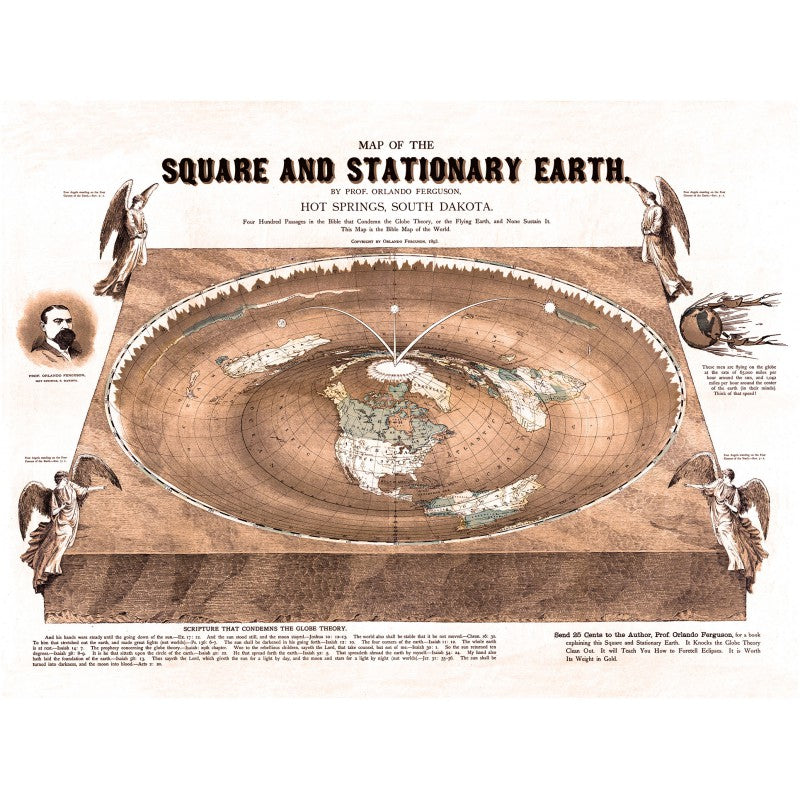Square and Stationary Earth Map: The Forgotten Alternative Model
The Square and Stationary Earth Map is one of the lesser-known models within the broader flat Earth theory. Unlike the traditional circular flat Earth design, this model depicts our planet as a square-shaped, immovable plane, fixed at the center of the universe. Advocates of this map believe the Earth does not move or rotate, standing in stark contrast to the mainstream understanding of planetary motion and shape.
Origins of the Square and Stationary Earth Map
The concept of the Square and Stationary Earth Map emerged from early 19th- and 20th-century discussions around alternative cosmology. It gained attention when certain researchers and Biblical literalists began interpreting ancient texts that described the Earth as having “four corners” or “pillars.”
These interpretations led to visual representations of the Earth as a square plane with four cardinal edges — North, South, East, and West — often enclosed by firmaments or barriers that held the heavens and waters in place.
Description of the Square and Stationary Earth Map
In this unique model, the Square and Stationary Earth Map portrays:
-
A flat, square surface with corners symbolizing the limits of the Earth.
-
The Sun, Moon, and stars moving above the Earth in perfect circles.
-
Antarctica positioned as an outer barrier or edge, similar to an ice wall.
-
The North Pole often placed near the center, serving as the reference point for navigation.
-
A motionless Earth, contradicting the heliocentric model of planetary rotation and orbit.
Supporters of the Square and Stationary Earth Map argue that all motion observed in the sky — from sunrise to sunset — results from the movement of celestial bodies, not the Earth itself.
Religious and Historical References
Many followers of the Square and Stationary Earth Map base their belief on Biblical cosmology, citing verses that refer to “the four corners of the Earth” and “the foundations of the world.”
This map has also been connected to early religious cartography and the works of scholars who believed Earth was the center of God’s creation. These ideas were prominent before the rise of modern astronomy and physics.
The Scientific Viewpoint
Modern science, through satellite imagery, physics, and astronomy, has proven that the Earth is a rotating, spherical body orbiting the Sun. The Square and Stationary Earth Map contradicts this evidence, as it does not account for:
-
The Earth’s curvature visible from high altitudes.
-
The Coriolis effect in global weather patterns.
-
The differences in star constellations across hemispheres.
-
Time zones and circumnavigation routes.
Despite this, the Square and Stationary Earth Map remains a topic of curiosity among alternative thinkers and researchers who question the mainstream scientific consensus.
Cultural and Symbolic Significance
In modern times, the Square and Stationary Earth Map is often viewed as a symbol of independent thought and the human tendency to reinterpret ancient wisdom. It also serves as a reminder of how belief systems evolve — blending observation, faith, and philosophy into unique worldviews.
Artists, theorists, and digital creators have revisited the Square and Stationary Earth Map as a metaphor for stability and divine order, contrasting it with the dynamic, spinning globe of mainstream science.
Conclusion
The Square and Stationary Earth Map may not align with scientific evidence, but it continues to fascinate people who explore the boundaries between science, faith, and philosophy.
Whether seen as a relic of early cosmology or a bold challenge to accepted truths, this map reminds us that humanity’s search for understanding often takes many shapes — sometimes even square ones.



Comments
Post a Comment